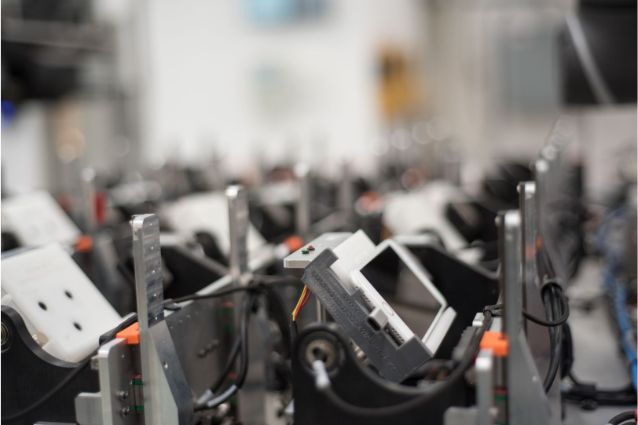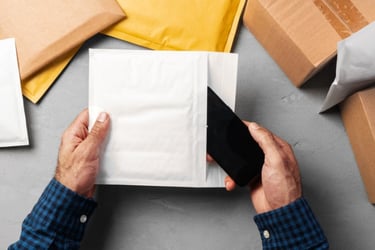Are you eager to start or optimize your trade-in program? Are you worried that you don’t have the resources to manage the end-to-end process yourself?
Getting a partner for your trade-in program takes many risks and pressures away. A poorly executed trade-in program could have financial impacts on your business. It can also damage your brand reputation.
Ingram Micro Lifecycle works with most UK network operators to support their trade-in programs.
After reading our article below, you’ll be better prepared to begin your research into looking for a trade-in partner.
Why you should use a trade-in partner
The market for refurbished devices is booming - attributed to a number of factors including supply chain concerns, rising premiums on new technology, sustainability awareness, a shift towards remote working, and a cost-of-living increase, among others.
If you’ve been thinking about engaging with a trade-in partner but aren’t sure whether it’s right for you, here are some added benefits.
The financial stability of the partner enables them to buy back the devices on your behalf. This de-risks the process for you as a business. They need to have the cash flow to be able to offer this.
The partner will have ready-built relationships and a recognized standing on recommerce channels. The partner will be well-positioned for onward sales and supply. There’s added confidence which will result in competitive buy prices.
Look for a partner with repair and refurbishment capabilities, along with Original Equipment Manufacturer (OEM) accreditations. These will ensure that the maximum value can be recovered on traded-in devices. OEM accreditations will enable their access to original parts and approved processes, all to the manufacturer’s standards.
With these expert processes, the partner can easily repair small faults, which negates the need to offer the end customer less money. This gives your customer a more satisfactory experience as they get more money for their preloved device.
For example, if trading in online, there’s some subjectivity when it comes to determining the functional or cosmetic status of the device. The owner could say it’s fully functional and in tip-top cosmetic condition and so is given a quote based on that. When receiving the device, technical processes could have a different outcome.
Rather than re-quoting the customer to deduct from the amount based on the small fault or low-level wear and tear, your partner’s processes can cost-effectively repair the damage at a minor cost. Thus negating the need to reduce the quote to the customer.
This could also happen if the fault is missed in-store or is just undetectable at the point of quotation.
The customer will receive the money they were originally quoted, and it’ll be a more seamless transaction. Happy days for them.
As technology evolves, so too do the processes involving them. It’s now possible to uplift the cosmetic grade of a device at a low cost. This increases the return for the business customer whose end customers trade in their devices.
7 things a trade-in partner should have
The trade-in partner that you choose to work with should ultimately be focused on getting the best possible outcome for the devices that you own.
They should have a variety of activities and processes in their wheelhouse to maximize value recovery.
1. Conscientious approach
This is perhaps often overlooked when profits are at stake, but you should weigh up the environmental outlook your potential trade-in partner has. Check what the provider is communicating about what happens to the devices, and be sure you know where technology ends up.
Don’t allow the devices to be shipped off to China for a quick resolution, out-of-sight, out-of-mind approach. Make sure your provider is conscious of where the devices are going.
What sustainable messaging are they putting out? What are the environmental successes they’re proud of? By way of association, you may be able to incorporate those into your business practices.
2. Great brand reputation
It’s straightforward that you shouldn’t want to work with anyone who’s notorious for bad practices. Do some research to see what’s being said about the provider online. Reach out to your network to see what’s being said behind closed doors.
You don’t want to risk your reputation through association with a brand that’s already tarnished.
3. End user-friendly processes
We’ve identified the key factor for trade-in success. Putting customers at the forefront of activities improves the transaction rate, sustains customer retention, and increases brand reputation.
Customers want as simple a process as possible, with little effort required. The partner you select should avoid the pitfalls that consumer-facing trade-in programs are at risk from.
4. High customer satisfaction
What are customer retention rates like? What do end users say about the trade-in process through other networks or retailers that they work with?
Check how they will interact with your customers. End users care about when they’ll get paid and that they’ll receive the amount they were quoted.
5. Cash flow to fund the program
A trade-in scheme requires huge financial support.
Get guarantees that your prospective partner has the cash flow to make customer payments and can follow up with invoicing following the terms provided.
6. Speedy processes
Traded-in devices are at risk from depreciation, and their value drops every day that they’re left on your books.
Make sure you know how long your partner’s processes take, from receiving the devices to getting value recovered for you.
Be aware of how many steps there are in the processes and what factors affect the speed of these.
7. Transparency
Look for a trade-in program partner that is upfront about their activities. For example, if participating in device auctions, will they share who the bidders and buyers are? Will they provide a breakdown of what the devices are selling for?
Check for the environmental statistics and metrics that they’ll share with you. How do they calculate these and guarantee accuracy?
Finding a trade-in partner
By checking through this list when searching for a trade-in partner, you’ll find one that focuses on the right areas to ensure your partnership and your program is successful.
Ingram Micro Lifecycle is the provider of choice for many network operators and retailers for their trade-in programs. Contact us if you’d like to discuss the design and build of your trade-in program.
For further reading, these articles may be of interest:
- 8 Pitfalls of Consumer-Facing Trade-In Programs & How to Avoid Them
- In-Store vs Online Trade-In Programs: Which is Best for Your Business?
- 4 Ways a Circular Economy Has Influenced Device Ownership
- Switching Supply from New to Refurbished Devices? A 5-Step Guide
- 8 Ways a Tech Reverse Logistics Partner Enables a Circular Economy














